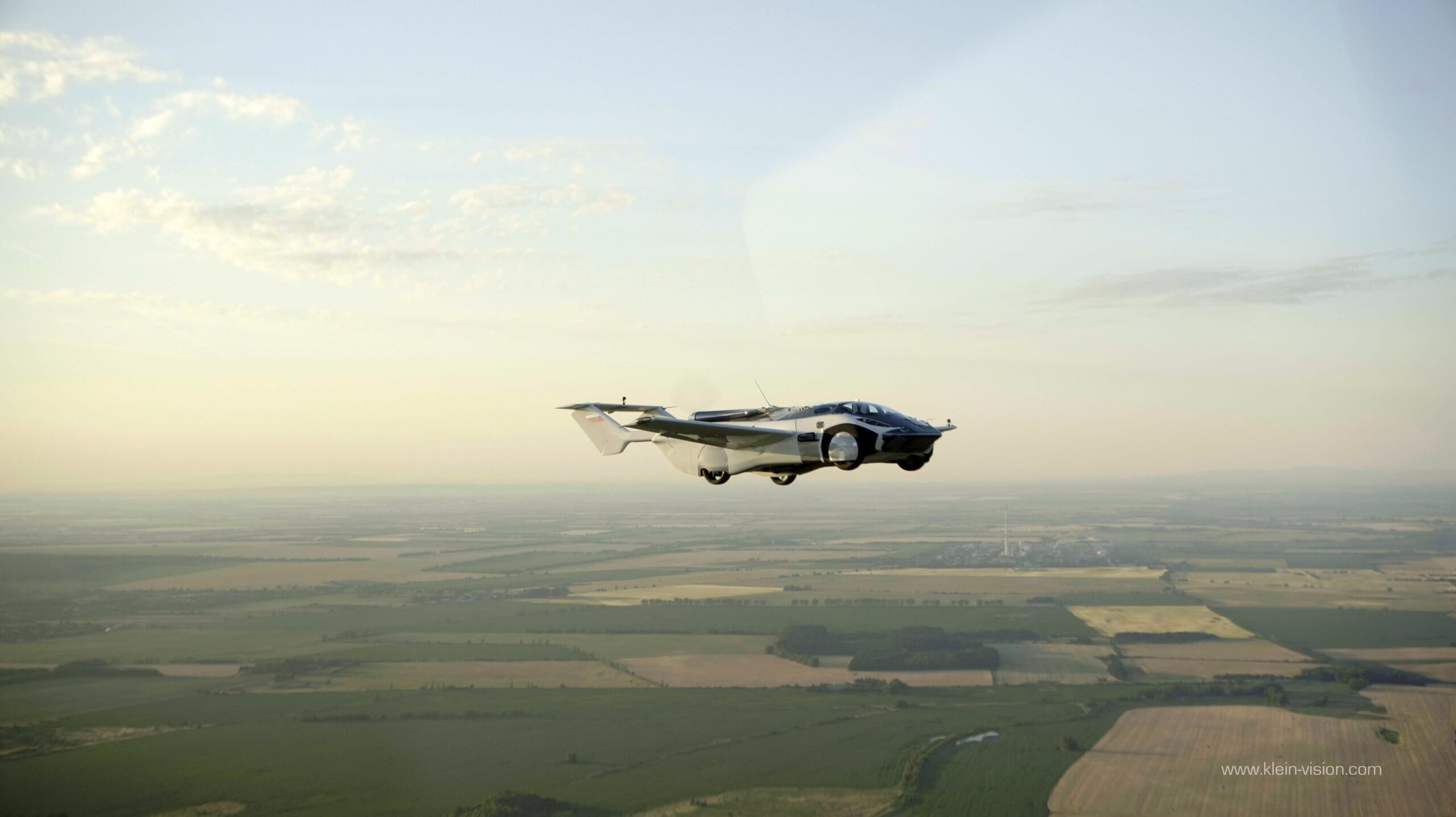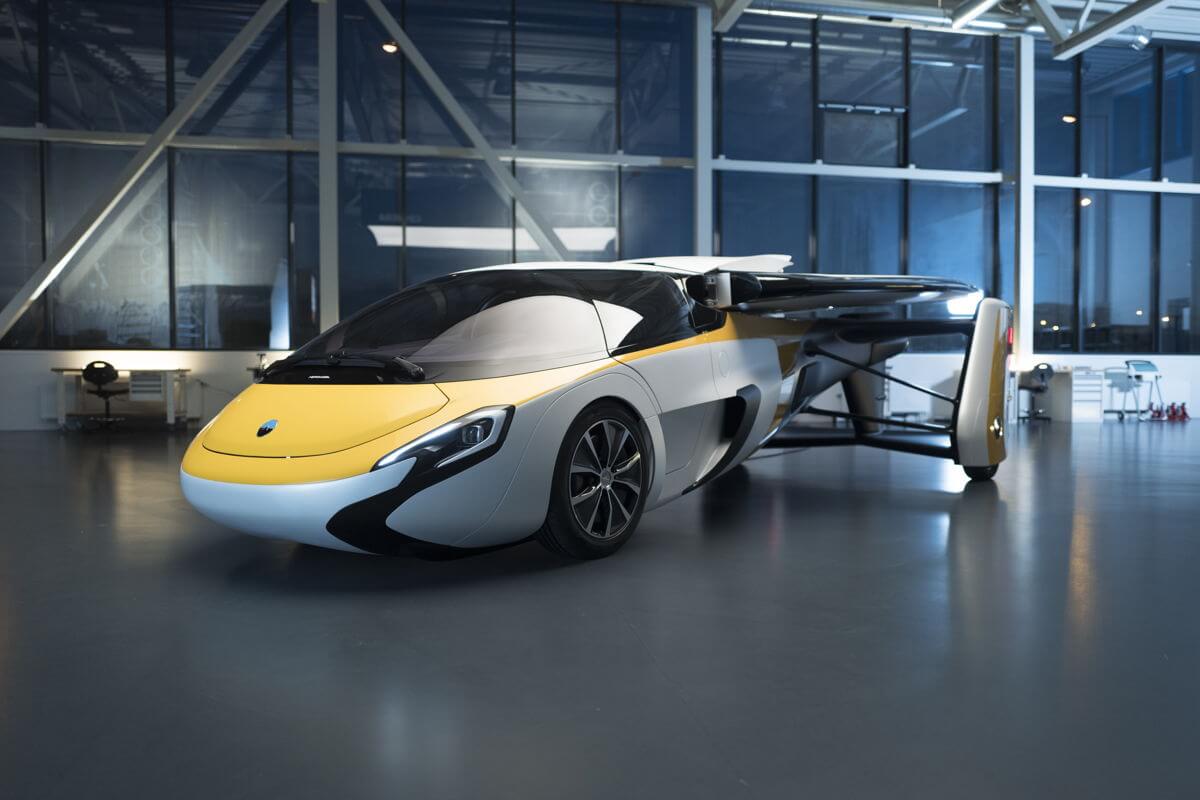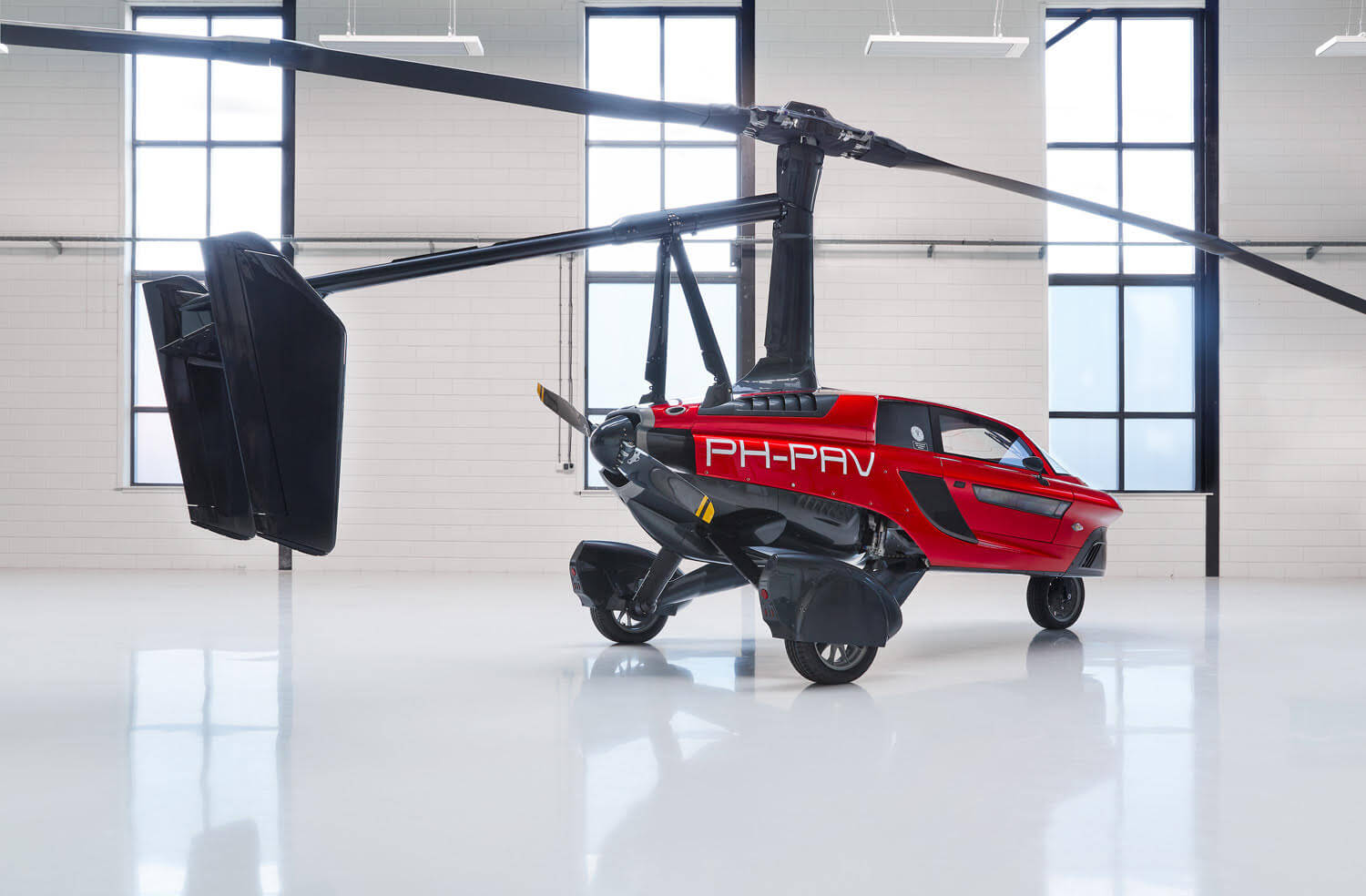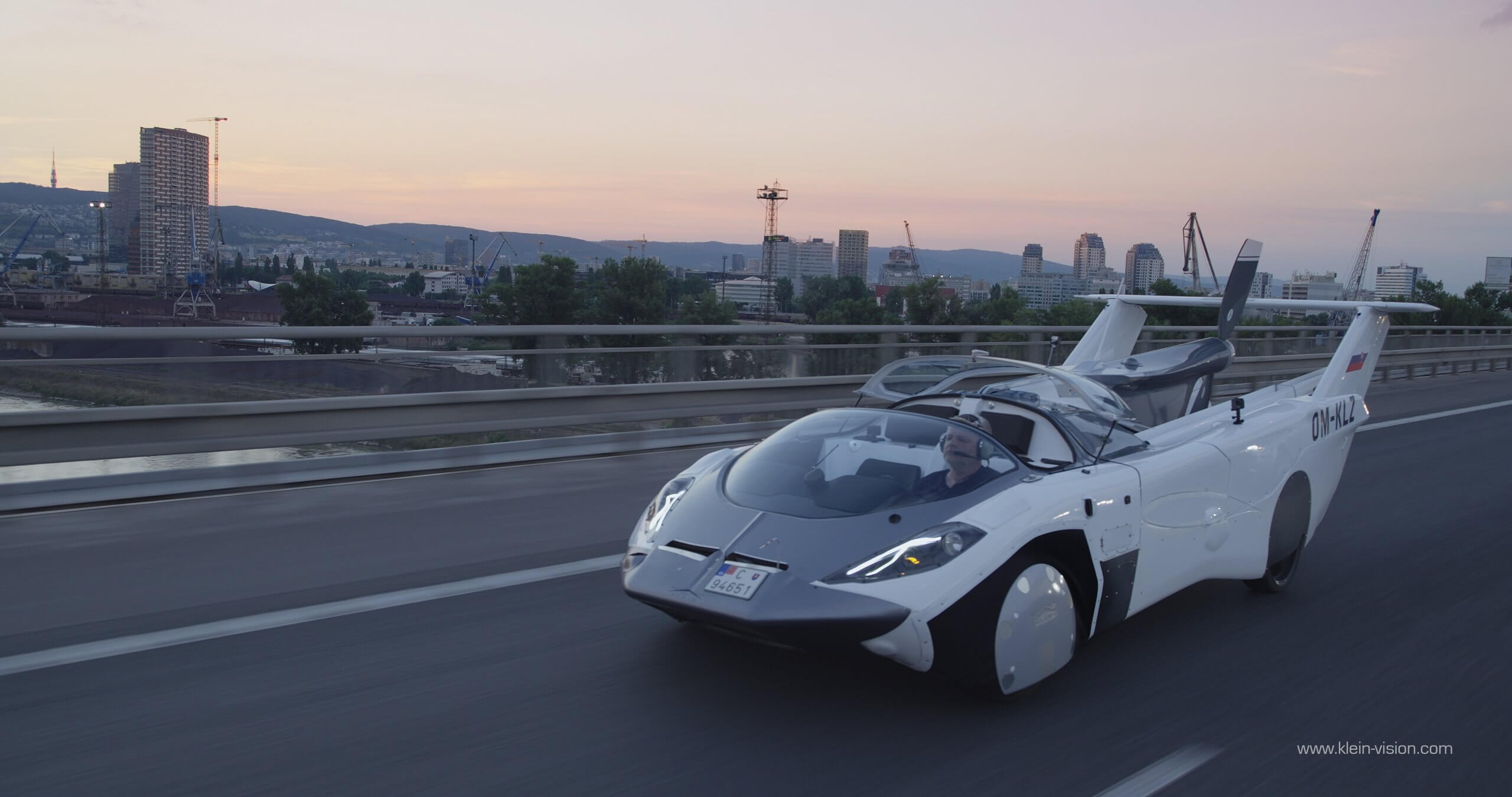
On 28 June 2021 in Slovenia, KleinVision successfully flew their prototype AirCar from Nitra to Bratislava, a journey lasting 35 minutes. Upon arrival at Bratislava, the AirCar stowed its wings and retracted its tail before driving down through town to its final destination.
The AirCar is designed to be air legal and road legal (according to EU standards), with the next pre-production model designed to have a 300-horsepower engine and fly at speeds of 162 knots/300kph.1
Take a look at the test flight below.
Video supplied by KleinVision
KleinVision isn’t the only company interested in producing flying cars, and there are even more in Slovenia. Local rival AeroMobil, are working on their own flying car that functions very similarly to the AirCar, intending to get the AeroMobil ready for sale to the public by 2023.2
Dutch company PAL-V is working on a flying car that deploys rotor blades to fly like a helicopter, the PAL-V Liberty.3 One of the first flying car manufacturing companies, Terrafugia, got an airworthiness certificate for their ‘roadable aircraft’, the Transition flying car, from the Federal Aviation Administration. While it is also approved for road use, Terrafugia will initially sell a flight-only model and aims to develop the on-road capabilities of the Transition further in 2022.4
So, with a sci-fi future that’s getting closer and closer to our reality, we had to ask:
“Will car insurance cover a flying car?”
Is it even possible to provide insurance for a flying car?
Frank Peppard, Finance Director at Carpeesh, noted that providing insurance for cars is entirely different from covering aviation and motor transport vehicles, especially when self-driving autonomous vehicles are factored into the mix.
“It might be a combination of aviation insurance and motor vehicle insurance, plus commercial insurance, if the nature of the vehicle is designed for ridesharing or taxi services rather than personal use,” Peppard says.
“Consumer car insurance cover might not exactly fit the bill, especially if you’re only travelling as a passenger, rather than flying yourself. Today, it’s about insuring the operator for having passengers to commute.”

Image supplied by AeroMobil
This isn’t to say that providing car insurance for a flying car is entirely out of the picture, if only for when it is being driven on the road. The flying car could be insured using traditional underwriting and data collected from telematics – also known as ‘black box insurance.’
Telematics provide the insurer information about how the vehicle is used, including what speed it travels at and how hard the driver applies the brakes. As Peppard explains, using telematics could be the key for an insurer dealing with a whole new unknown vehicle.
“Suppose flying cars were legal and certified in Australia, the approach should be taken that the quality training and experience of the pilot are highlighted and use the data available to prove their journeys are safe, that they follow regulations in the air and on the ground, and then the insurance can be priced for risk.”
Current aviation insurance for aeroplanes factors in pilot experience, which includes:
- certificates, licensing and training
- number of flight hours recorded
- any violations of aerospace regulations
- criminal history
- claims history
- any incidents or crashes5
Compare the Market’s General Manager of General Insurance, Stephen Zeller, notes that a flying car can have a motor insurance policy, which would only cover it for regular road use.
“In a future where flying cars are a reality, it’s possible that flying cars could get a policy, depending on what insurance providers offer. This would then have to be taken in conjunction with an aviation policy to cover the vehicle in the air,” says Zeller.
“The alternative to a combination of car insurance and aviation insurance would be a whole new insurance product that incorporates both, but it remains to be seen what insurers will do when it comes to flying cars.”
There would have to be some adjustments to the formula that insurance providers use to price the product. For example, Peppard notes that the vehicle’s maximum speed plays a role in how insurance is calculated.
“If we were to provide a flying car insurance product, we would have to change our speed scoring if the flying car can technically reach a cruising speed of 300kph,” Peppard states.

Image supplied by PAL-V
The problems with insuring a flying car
Having a vehicle that can both fly and drive presents additional risks, making it hard for the vehicle to get coverage after an incident. Writing in the Tort Trial & Insurance Practice Law Journal, Matthew Berard explains the issue.
“An insurance company could refuse to issue aviation insurance on an aircraft that has been involved in an automobile accident due to concerns of structural integrity or flight worthiness.”5
Another problem is how the flying car itself will be used. Car insurance can cover personal use (driving around for shopping or visiting family), commuting to work, business use (which covers driving to external meetings), or a mix based on a consumer’s preference.
Aircraft can be used for a wide range of activities. They can be used for pleasure, sporting and recreation, or travel for business. They can also be flown as a business activity, such as aerial photography, crop dusting, and transporting passengers or cargo for money.
Whether flying cars are covered by one single policy that includes car insurance and aviation insurance – or the owner gets cover by purchasing separate policies for the specific modes of transportation – there are a variety of factors that are going to cause headaches for insurance providers.
Zeller notes that while insurance cover can be provided and priced, knowing when the different types of cover apply can be tricky.
“There may be crossover when the car turns into an aircraft and starts flying. Say, for example, a flying car has an incident while it is on the runway; was it still driving or flying? In this hypothetical situation, it’s important to understand exactly what coverage applies and when it applies,” says Zeller.
“If the flying car is covered by separate policies for air travel and ground travel, it’s important to know when one type of cover takes over, and the other doesn’t apply. This could be a tricky issue for insurers to navigate.”

Image supplied by KleinVision
Flying car insurance: a luxury product for a luxury vehicle
Car insurance for a flying car only covers one aspect of the vehicle’s use – when it’s on the road. Peppard predicts that there will likely be specialised products that cover the use of the vehicle as a whole (driving and flying), including:
- aviation insurance
- motor insurance
- personal injury cover
- legal liability
The value of a flying car, combined with how much cover potential insurance policies, means the insurance premiums could be quite expensive, Peppard says.
If your car doesn’t have wings yet but you’re looking to save on insurance, you can compare and buy through Compare the Market, Australia’s biggest car insurance comparison website.
Headline image supplied by KleinVision.
Disclaimer: Carpeesh is a commercial partner of Compare the Market.
Sources:
1 The flying car completes first ever inter-city flight. KleinVision. 2021.
2 Be part of making history. AeroMobil. 2021.
3 Explore the PAL-V. PAL-V. 2021.
4 Terrafugia Announces FAA Special Light-Sport Airworthiness Certificate. Terrafugia Inc. 2021.
5 Matthew Berard. “Reconciliation of Aircraft and Automobile Insurance Policies,” Tort Trial & Insurance practice Law Journal, American Bar Association. Volume 47 Issue 2, pages 781-802. 2012.







